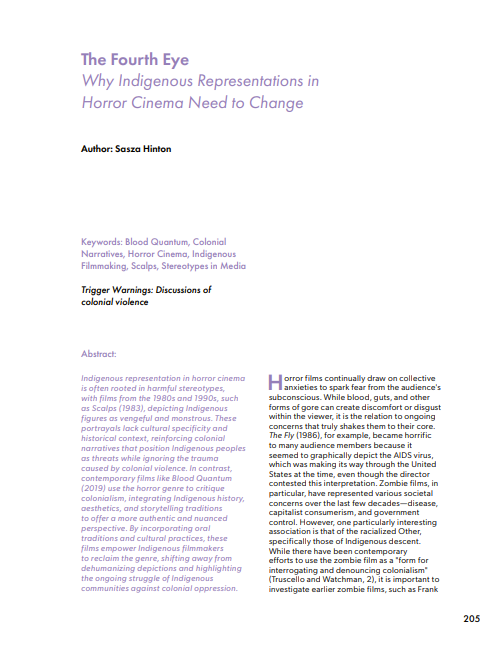"Fourth Eye" Cinema
Indigenizing the Zombie Film
DOI:
https://doi.org/10.29173/crossings405Keywords:
Blood Quantum, Colonial Narratives, Horror Cinema, Indigenous Filmmaking, Stereotypes in Media, ScalpsAbstract
Indigenous representation in horror cinema is often rooted in harmful stereotypes, with films from the 1980s and 1990s, such as Scalps (1983), depicting Indigenous figures as vengeful and monstrous. These portrayals lack cultural specificity and historical context, reinforcing colonial narratives that position Indigenous peoples as threats while ignoring the trauma caused by colonial violence. In contrast, contemporary films like Blood Quantum (2019) use the horror genre to critique colonialism, integrating Indigenous history, aesthetics, and storytelling traditions to offer a more authentic and nuanced perspective. By incorporating oral traditions and cultural practices, these films empower Indigenous filmmakers to reclaim the genre, shifting away from dehumanizing depictions and highlighting the ongoing struggle of Indigenous communities against colonial oppression.

Downloads
Published
Issue
Section
License
Copyright (c) 2025 Sasza Hinton

This work is licensed under a Creative Commons Attribution 4.0 International License.

